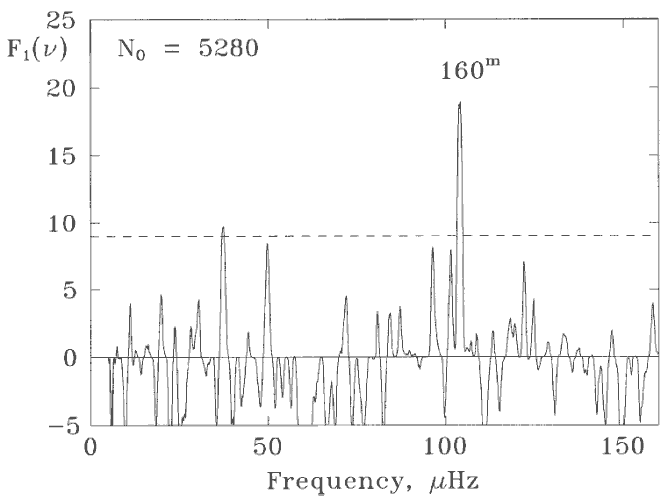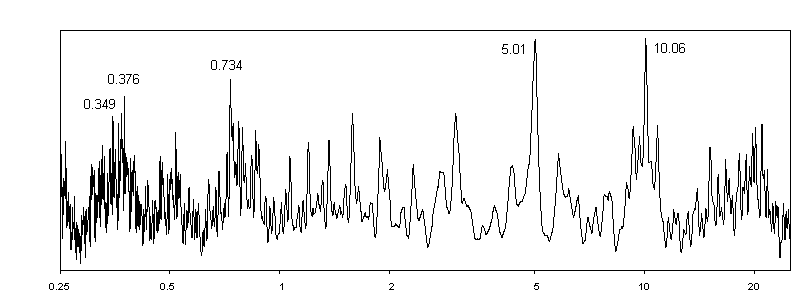
Attempts to dismiss these suggestions as random coincidences have been made but when one examines the degree of correspondences between the many different measurements in different variables it is quite clear that the relationships are deep and meaningful. First, some of the reports of periodicities and relationships will be examined and then a summary will be presented and conclusions drawn.
"The discovery of global pulsations on the Sun with period Po = 160 min enables us to consider a characteristic wavelength for the solar system L = cPo = 19.24 a.u., where c is the velocity of light. The planetary distances show a statistically significant quasicommensurability between L and 2.p.ai for the inner planets or between 2.p.ai and L for the outer ones (ai is the major semiaxis of the orbit). This L commensurability leads to a new approach to the Titius-Bode planetary distance law. The physical mechanism responsible for this L commensurability in the solar system is evidently related to gravitational waves from an external source of unknown nature."
A possible relation between planetary distances and the 160 minute solar pulsation
Publications of Vasily Ivanovich Haneychuk (many with Valery A. Kotov)
"Solar Oscillations, Solar Mean Magnetic Field, Solar Physics, Instrumentation, Problem of the solar 160 min oscillation, Problem of 160-min oscillation in the Active Galactic Nuclei"
"According to General Relativity, a stellar binary generates gravitational waves at a primary frequency twice the orbital one; these waves however have not yet been detected. If the Universe contains gravitational radiation at discrete frequency(ies) - particularly with the period of 160 minutes discovered in the 1970s in the Sun, corresponding resonances might be found in the distribution of orbital frequencies of binaries. With this in mind, we analyse all available data on orbital frequencies of close binaries of the Galaxy. In the frequency range 5 to 160 µHz, we find one significant frequency 104.2 µHz - at the 4 sigma confidence level -which modulates the distribution of about 5000 binaries with periods P < 5.5 d. The corresponding "resonant" period, 160.0 +/- 0.5 min, coincides with that of solar pulsation 160.0 min. The question on its origin and also the hypothesis of a cosmological nature of the oscillation are briefly discussed."

The frequency 104 µHz in the orbital motion of close binary stars (html)
The frequency 104 µHz in the orbital motion of close binary stars (pdf)
The inner planets are associated with the ...

|
|
| |||||||||||||||||||||||||||||||||||||||||||||||||||||||||||||||||||||||||||||||||||||||||||||||||||||||||||||||||||||||||||||||||||||||||||||
|
|
|